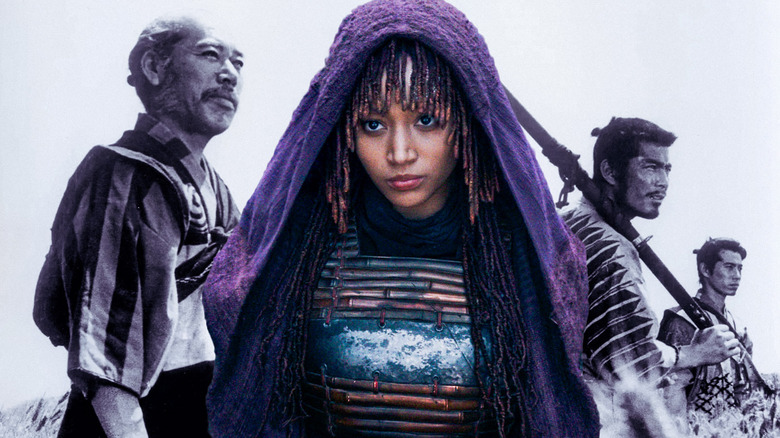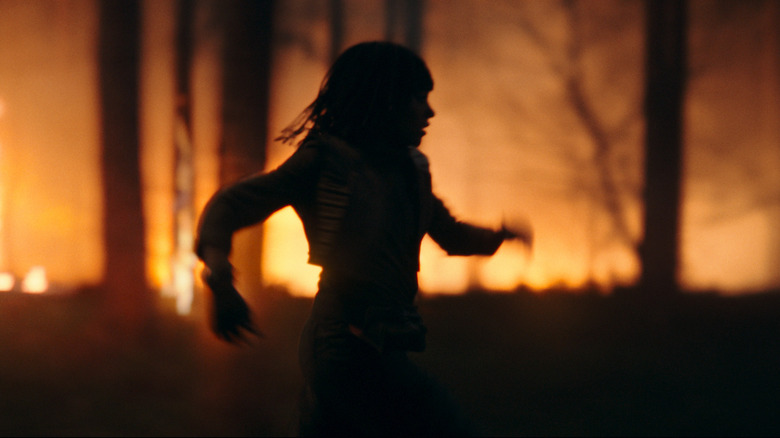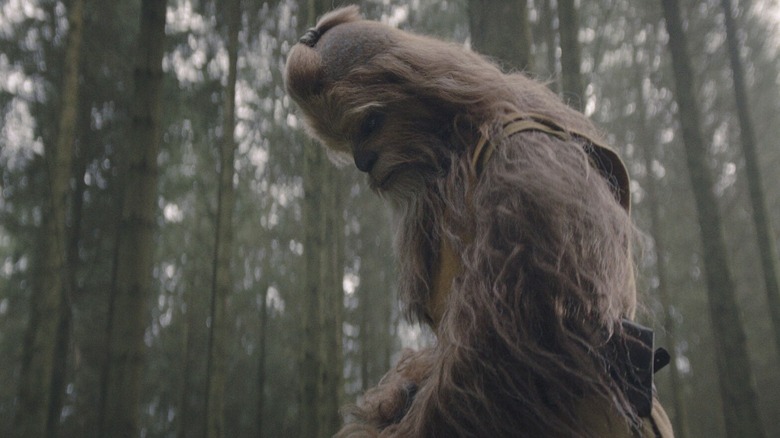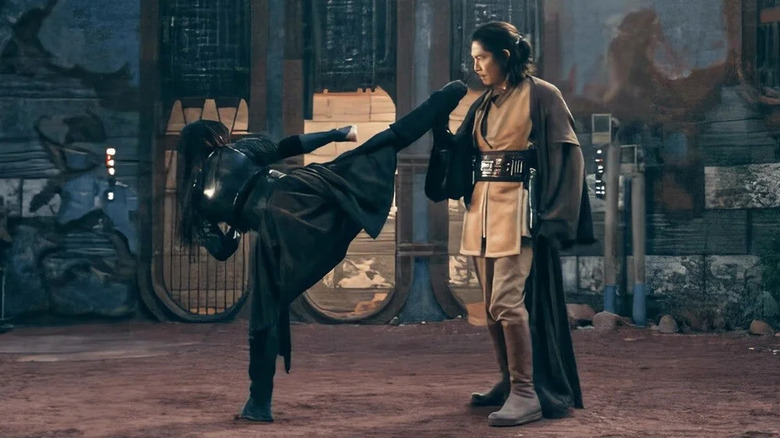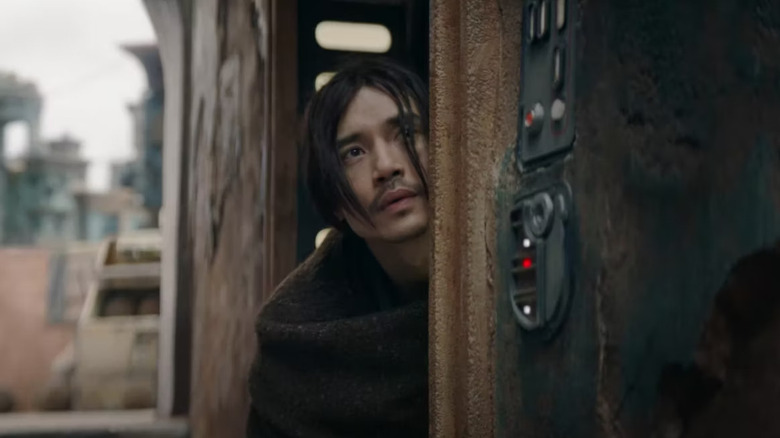George Lucas' Favorite Director Has Clearly Influenced Star Wars: The Acolyte
Mild spoilers ahead for the first four episodes of "Star Wars: The Acolyte".
Akira Kurosawa's work has been a cornerstone of "Star Wars" since the very beginning. George Lucas's original synopsis for "Star Wars" was, in large part, just the synopsis of Kurosawa's "The Hidden Fortress" with the Japanese names crossed out and the science fiction names of "Star Wars" filled in. The story evolved from there, adding in more swashbuckling and "Flash Gordon" influences. Throw in some "THX-1138" and "American Graffiti" and you get a world that only George Lucas could have blended up.
From that point forward, Kurosawa has been a major influence on virtually all of the "Star Wars" movies and TV shows. In press events leading up to its release, Lawrence Kasdan cited Kurosawa's "High and Low" as a key reference to "The Force Awakens." Director Rian Johnson clearly loved "Rashomon" and pulled its influence directly into "The Last Jedi."
But Leslye Headland is wearing her love of Kurosawa on her sleeve with "The Acolyte" as well. In an interview with Nerds of Color, she talked about how "The Acolyte" was a love-letter to Kurosawa as well as wuxia-style films. "I think when you love something this much, and you have so much reverence for it, it's difficult to find your own way," Headland said. "I felt the best I could do was lean on the things I love the most about 'Star Wars.'"
So where do we see the Kurosawa influence in "The Acolyte"? It's everywhere.
Star Wars: The Acolyte's story structure echoes Rashomon
"Rashomon" is an unusual Kurosawa film and important in the history of cinema. Through the film, we're shown the same event three times from three different points of view. Who is really the bad person in the situation? Who is the hero? We're left to decide on our own. As "The Acolyte" has been building our view of what happened that fateful night to Mae and Osha sixteen years ago, we've seen and heard different perspectives on what each character experienced.
This was also central to the intricate workings of Rian Johnson's triumph of a "Star Wars" film, "The Last Jedi."
Each character's perspective on the same events shades their motives and their understanding of the narrative. It's complicated and layered, and seeing a biased view of events in the third episode of "The Acolyte" after hearing the interpretations of what happened from Torbin, Sol, Mae, Osha, and others only begs you to reevaluate what you think you know. This method of filmmaking, where things aren't exactly objective, has a long history in cinema and greatly adds to the participation of the audience.
The Acolyte's Jedi Masters are reminiscent of Seven Samurai
Some of the other flourishes that Headland brings from Kurosawa into the world of "The Acolyte" involve Jedi Masters Kelnacca and Sol. Both feel patterned after Takashi Shimura's character, Kambei Shimada, in Kurosawa's masterpiece "Seven Samurai." Kambei is the wizened leader of the titular samurai, reserved and always looking for the right thing to do, even if it doesn't benefit him. Sol also has the flavor of wisdom that Kambei has.
Kelnacca, on the other hand, doesn't get much to say, but visually, he's the closest thing we've gotten to a samurai-looking Jedi in one chief aspect. Notice how his hair is cut, shaved at the top and pulled into a top-knot, like all of the samurai in Kurosawa's jidaigeki films. When you add the ornate patterns on the Jedi robes and tabards from "The High Republic" era, you get visual and thematic ties right to the classic that George Lucas hailed as his favorite Kurosawa film – which he referenced in "Revenge of the Sith," and more than one episode of "Star Wars: The Clone Wars."
The dusty influence of Yojimbo
Leslye Headland also cited a direct reference to "Yojimbo," Kurosawa's most western samurai film. Sergio Leone remade it shot-for-shot into the spaghetti western "For A Fistful of Dollars" and its influence is evident in characters like Han Solo and in many other parts of the "Star Wars" universe.
In "Yojimbo," Kurosawa uses the dust and the wind to tell visual elements of the stories, and the streets of the town Toshiro Mifune's bodyguard character finds himself in are particularly dusty. As the Jedi track down Mae on Olega after her murder of Jedi Master Torbin, they corner her in a dead end that looks like a color version of the set from "Yojimbo," replete with a dusty street. Just as Kurosawa uses the wind and dust to key us into the emotions of the storytelling, Headland does the same here while telling a character-focused story about a mastery of the Force.
As Master Sol manipulates the Force and fights with Mae, the dirt and dust goes undisturbed. When Yord joins the fight, everything he does in the Force kicks up a considerable amount of dust. Uncontrolled and unrestrained, Mae causes an explosion of the dirt of the street and uses it to escape. This sort of storytelling comes right from Kurosawa and adds a unique layer that will work only subconsciously on most viewers, but is powerful nonetheless.
Back to Star Wars' roots with The Hidden Fortress
As mentioned earlier, "The Hidden Fortress" was the initial basis for "Star Wars." Much later, "The Phantom Menace" allowed Lucas to return to its roots and tell a similar story of venerable generals and queens with body doubles and bodyguards, but for "A New Hope" the primary influence came in the form of its two lowliest characters: the peasants just trying to get home. They bicker and argue, and much of their dialogue was lifted straight over to R2-D2 and C-3PO. It was from "The Hidden Fortress" that Lucas hit upon the structure of having the major point of view characters for "A New Hope" be the bickering droids who we follow through the initial sequences.
The character who feels most like those bickering peasants in "The Acolyte" is Manny Jacinto's Qimir. Especially as we head into the fourth episode, the visual similarities stack up there as well as he and Mae argue on the jungle path to Kelnacca's just like the peasants in "The Hidden Fortress."
The inspiration is there, and it's worth going back to the source materials of "Star Wars" and these original roots. Not only to better understand "Star Wars", but to simply have a more well-rounded education in cinema and media literacy. It's terrific stuff, and the people who make "Star Wars" know it.
New episodes of "Star Wars: The Acolyte" release Tuesdays at 9 pm E.T., only on Disney+.
